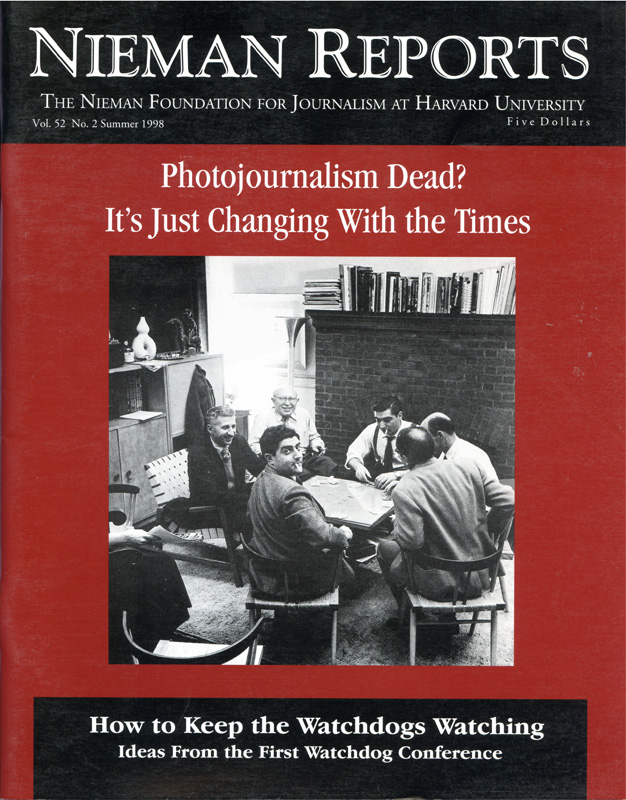These photographs are from “Israel: A Photobiography, The First Fifty Years,” by Micha Bar-Am, a 1986 Nieman Fellow (Simon & Schuster, 1998). The photos shown, all © Micha Bar-Am/Magnum, are taken from the chapter, “Daily Bread.”
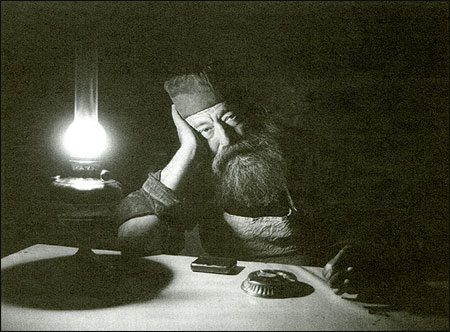
Father Neophitus, Santa Katarina Monastery, Sinai, 1967. It was 3 or 4 a.m. The Greek Orthodox priest had just finished baking bread and was back in his cell for a glass of ouzo and a hand-rolled cigarette. In the morning the bread would be given to Bedouin in the area in accordance with an agreement made centuries ago, which guaranteed the safety of the small group of monks among tribes that were initially hostile.
Santa Katarina, a fortress as well as a monastery, was established by the Byzantine emperor Justinian I in the Sixth Century, at the foot of what is believed to be Mount Sinai, where Moses received the Ten Commandments. With the rise of Islam in the Seventh Century, the monks appeased the Muslims by building a mosque within the monastery compound. The monastery has notable collections of icons and Greek and Arabic manuscripts.
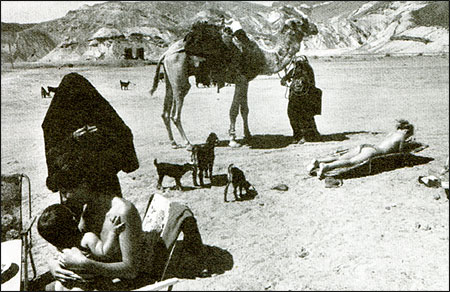
Taba beach, Sinai, 1982. Near the border between Israel and Egypt, sisterhood bridges the culture gap between sunbathers and Bedouin.
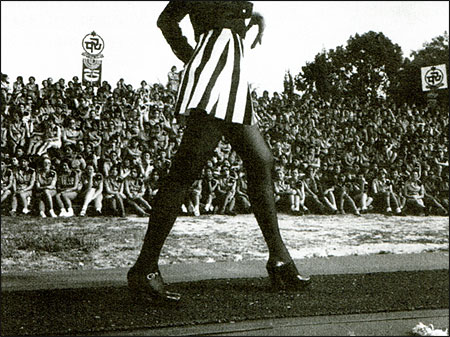
Fashion show, Tzriflin army base, 1973. With a fashion runway laid down on the parade ground, hundreds of women soldiers get a glimpse of what they might be wearing if they were not in khaki.
Among the roles that women fill in the army is training male soldiers in combat units—artillery, tanks, missiles—without themselvesengaging in combat.

On the train to Jerusalem, 1970. When the Temple was the focus of religious observance, it was customary to bring sacrificial offerings to Jerusalem three times a year on the holidays that coincided with harvest times: Passover, Shavuot and Sukkot. The tradition of pilgrimage continues, with variations on the theme.
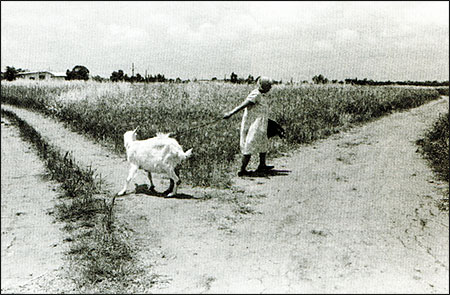
Preparing for Yom Kippur, Mea Shearim, Jerusalem, 1967. At 5 a.m. on the day before the Day of Atonement, this man is taking a live chicken home for the custom of kaparot, in which he will symbolically transfer his sins to the bird and swing it in a circle above his head to disperse them. The principle is that of the ancient scapegoat custom, in which the high priest of the Temple would transfer the community’s sins to a goat and send it off into the desert. The chicken, however, will be slaughtered and eaten.

Father Neophitus, Santa Katarina Monastery, Sinai, 1967. It was 3 or 4 a.m. The Greek Orthodox priest had just finished baking bread and was back in his cell for a glass of ouzo and a hand-rolled cigarette. In the morning the bread would be given to Bedouin in the area in accordance with an agreement made centuries ago, which guaranteed the safety of the small group of monks among tribes that were initially hostile.
Santa Katarina, a fortress as well as a monastery, was established by the Byzantine emperor Justinian I in the Sixth Century, at the foot of what is believed to be Mount Sinai, where Moses received the Ten Commandments. With the rise of Islam in the Seventh Century, the monks appeased the Muslims by building a mosque within the monastery compound. The monastery has notable collections of icons and Greek and Arabic manuscripts.

Taba beach, Sinai, 1982. Near the border between Israel and Egypt, sisterhood bridges the culture gap between sunbathers and Bedouin.

Fashion show, Tzriflin army base, 1973. With a fashion runway laid down on the parade ground, hundreds of women soldiers get a glimpse of what they might be wearing if they were not in khaki.
Among the roles that women fill in the army is training male soldiers in combat units—artillery, tanks, missiles—without themselvesengaging in combat.

On the train to Jerusalem, 1970. When the Temple was the focus of religious observance, it was customary to bring sacrificial offerings to Jerusalem three times a year on the holidays that coincided with harvest times: Passover, Shavuot and Sukkot. The tradition of pilgrimage continues, with variations on the theme.

Preparing for Yom Kippur, Mea Shearim, Jerusalem, 1967. At 5 a.m. on the day before the Day of Atonement, this man is taking a live chicken home for the custom of kaparot, in which he will symbolically transfer his sins to the bird and swing it in a circle above his head to disperse them. The principle is that of the ancient scapegoat custom, in which the high priest of the Temple would transfer the community’s sins to a goat and send it off into the desert. The chicken, however, will be slaughtered and eaten.
